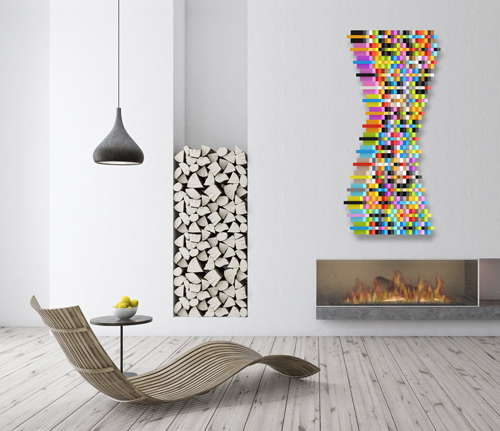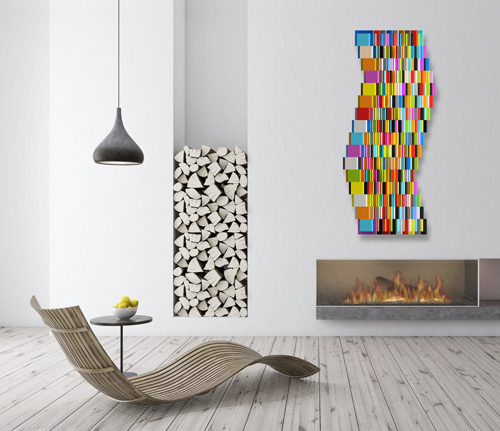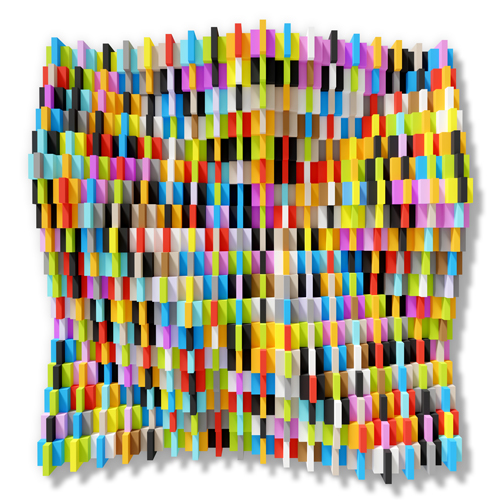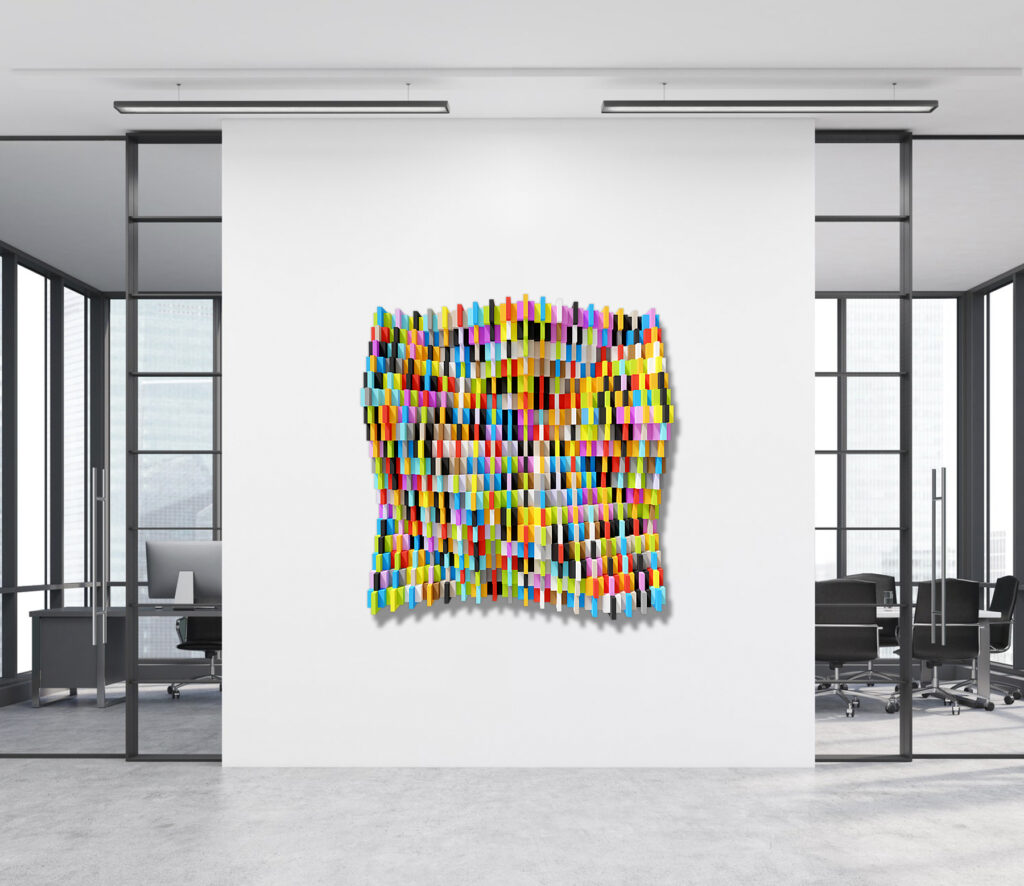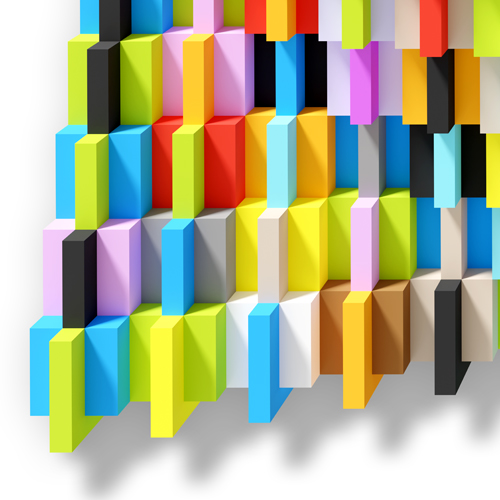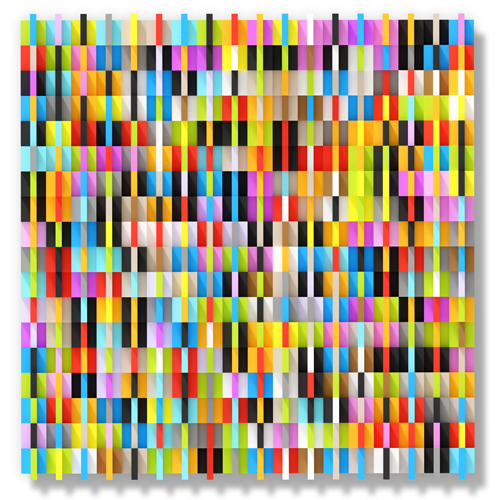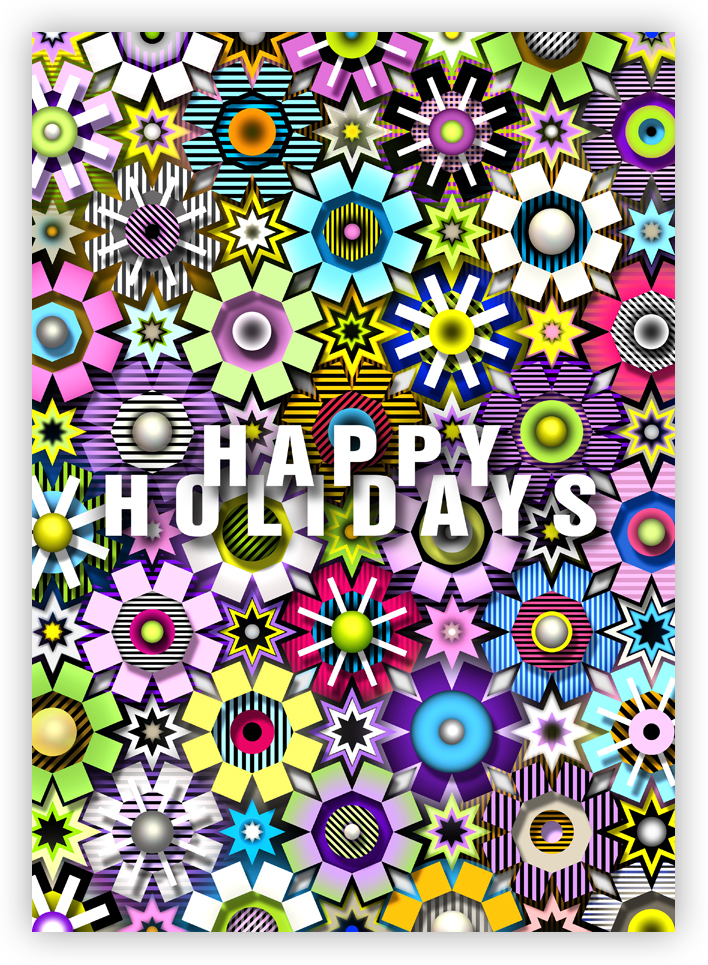These pieces are a continuation of the QUADRABAR 3D Derivative series. It is derived from a 3d model of multi-colored cubes intersected by multi-colored bars. The cubes shift up and down forming a kind of implied geographic terrain. QUADRABAR II and QUADRABAR III are derived from the same 3d model as QUADRABAR I.
Though they are derived from the same 3d model as QUADRABAR I, QUADRABAR II and QUADRABAR III look totally different. They look different because the 3d model has been re-oriented.
For QUADRABAR II, the 3d model is rotated 90 degrees in the vertical position and the camera is positioned to view it from the side at an oblique angle. In this view the bars are oriented horizontally and you see the shifting of the cubes with their intersecting bars making for an implied serpentine curve. Because the view is at an oblique angle, you see the cubes and bars compressed, thus compressing the colors, making for a totally different tapestry than QUADRABAR I.
For QUADRABAR III, the orientation of the 3d model for QUADRABAR II is further re-oriented by another 90 degree rotation sideways so that the bars are oriented vertically. In this view you see the ends of the shifting cubes again making for an implied serpentine curve. Similar to QUADRABAR I, the camera is positioned to view it from the side at an oblique angle compressing the view of the bars and making for a entirely different tapestry than QUADRABAR II.
Click here to see my post about QUADRABAR I
Click here to see a fly around animation of the 3D model and to read more about the 3D Derivative process.

uv cured inkjet on cnc cut out acrylic/composite aluminum
dimensions variable – 52″h x 24.75″w overall, edition of 3

